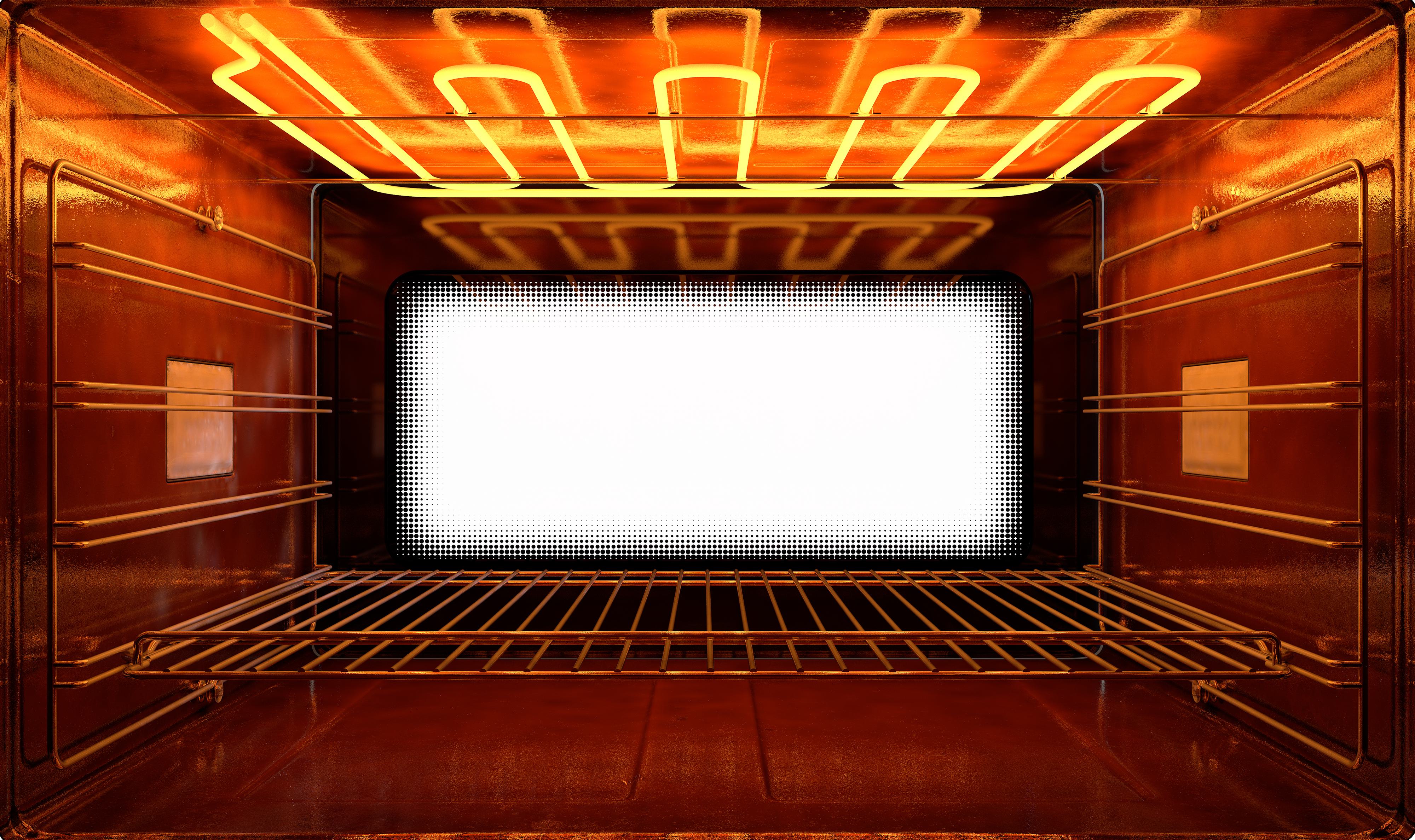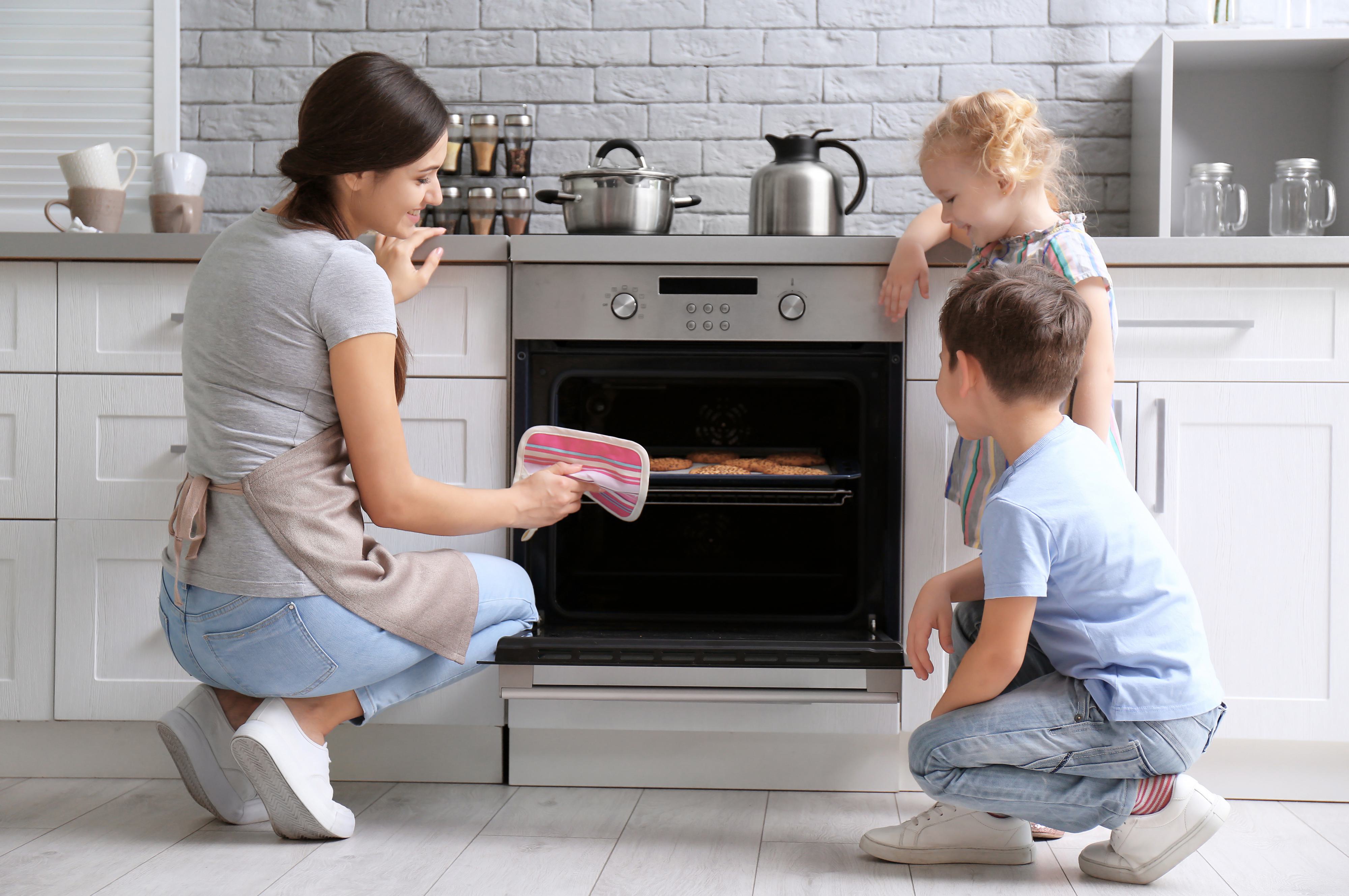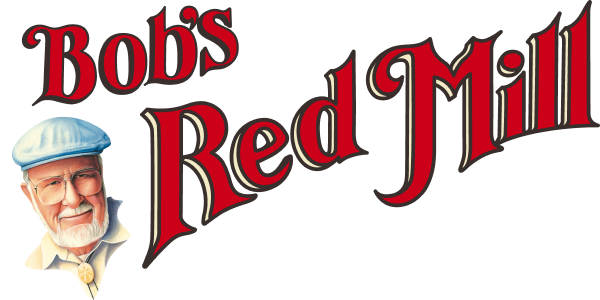If you are looking for a new oven or home, or if you are lucky enough to have a convection oven in your current home, then you may be wondering, What is a convection oven and how does it differ from a regular oven? You are not aloneit turns out a lot of people have heard these two terms, but do not actually understand what they mean.
You have probably heard that convection ovens are a bonus in a new home, but even a lot of people who have them have no idea what they are best used for, or how to use them. In fact, most people use a convection oven in the exact same way that they have been using a conventional oven like a Dutch oven for years, before learning the value that a convection oven can bring to their kitchens!
Here at Bobs Red Mill, we have broken down the differences between convection and conventional ovens to help you take your cooking and baking to the next level. Keep reading to explore all the secrets of convection ovens, when to use them, and most importantly, how to create multiple dishes with them.
They Are Mostly the Same

As far as the actual physical oven itself, it may surprise you to learn that a conventional oven and a convection oven are almost the same. As a matter of fact, convection ovens are almost exactly the same as regular ovens, just with an extra feature. A convection oven contains an additional fan and exhaust system that blows the
heated air through the entire space evenly while your food is cooking.
Whereas a normal oven has one source of heat (these are usually in the bottom of the oven), a convection oven has this one source as well usually, but also has the option to use convection heating, which turns the convection fan system on and fills the entire oven with the heat. However, you can use this type of oven normally to cook food without ever even turning on the convection setting, so there is a chance you may have a convection oven and not even realize it (if you want to go check right now, we'll wait).
What Does This Mean for My Cooking?
Okay, so now that you are back from checking your oven, let us talk about what this difference in airflow can mean for your cooking processes. A convection oven can be a part of a gas or electric oven, so you can use convection and still get the benefits of cooking with gas over electric or vice versa if you prefer one type of oven for your baking.
A convection oven circulates the oven heat throughout the entire oven space, which means that you will get a more even cook or bake on your dish than you would with a conventional oven and its stagnant heat source. The food can typically cook faster because the heat stays more consistent, and there are no cold or hot air pockets like there can be in a conventional oven.
You also will not have to deal with the oven heat rising and cooking your food unevenlytypically this shows up as food that is more cooked on the top and less cooked on the bottom. This can be beneficial for recipes where you want to cook your food more evenly, like meats and fish.
The exhaust portion of the convection oven features will also help pull moisture out of the oven, which can leave your food more crisp and fresh, which is perfect for veggies or baked chips! So the benefits of convection ovens are numerousfaster cooking, crispier end product, and more even cooking.
What About the Negatives?
Okay, we agree that it cannot be all positives. Like anything in the kitchen, an oven with convection is better for some recipes, while it may not be the best choice for all recipes. With any recipes that require rising, such as cakes, bread or other baked goods, you may have strange results with a convection oven.
The convection oven could accidentally cook the outside of the dish before the dough is through rising, which can cause strange textures and lopsided batters (no one likes a bumpy cake!).
We definitely recommend using a conventional oven for any recipes that require rising, as you do not want to cook the outside before the inside is finished leavening. The convection can also dry out the inside of these recipes, such as bread, cake, souffl, flan, or other baked goods so you want to steer clear of that setting if you want your final product to be nice and moist.
Overall, the convection oven setting is a great choice if you want a crisp, quick, product, but if you want your dish to maintain moisture or rise before it is finished baking, then stick with the conventional oven.
Energy Use
It turns out that true convection ovens are actually more energy efficient than most conventional ovens. This is not to say that the actual oven uses any more or less energy when on the conventional oven setting. It really just means that because the convection setting causes the food to be ready more quickly, this setting will require less energy than the normal setting.
The oven with convection does not need to heat up as much either, so the oven preheating does not require as much energy either. If you are interested in cutting down on your environmental footprint (and energy costs), then convection is a great way to go.
How to Accommodate for Convection
If this all sounds great, and you would like to try out cooking with your newly discovered convection settings, then we can help! You would probably think that you could just pop your dish into the oven on the same settings, flip the convection switch, and get that turkey roasted in half the cooking time!
Unfortunately, this is not the case. Because the oven cooks more consistently and more quickly, you need to make some adjustments from your normal settings if you are cooking with convection. Youll also have to base it on the different cooking times between a roast vs bake.
1. Lower the temperate by 25 degrees
First, you will definitely want to lower the oven temperature. Many chefs recommend lowering your temperature around 25 degrees from your conventional settings. Cooking is significantly more efficient with convection, so you do not need to raise the oven temperature as much.
2. Check the food frequently
You also should check in on your dish more often toward the end of cooking. Chances are you will not need to leave it in the oven for quite as long, so pay special attention to it to ensure it does not burn.
We always recommend checking on your dish via the oven light and not by opening the door, which is especially true with convection as this method relies so heavily on the circulation of air inside the oven. If you open the door, the air will escape, which will disrupt the convection process.
3. Don't crowd the oven
When using the convection setting, you will want to make sure you are not putting too many dishes inside the oven. It may be tempting to crowd everything in at once, but trust usyou will be rewarded for your patience.
The convection oven relies on air circulation, so it will cook much more evenly if there is not much else in the oven. The bonus here is that it will cook more quickly, so you will have time to bake multiple dishes separately instead of shoving them into the oven all at once.
4. Use dishes and pans with low sides
In the same vein, dishes and pans with lower sides will help with the air flow as well and allow your food more breathing (I mean, cooking) room. Think cookie sheets instead of casserole dishes, if your particular dish allows. If you make these slight adjustments to your cooking routine, then you will find that convection cooking is fun and delicious.
Different Settings
 Many convection ovens have different settings within the convection feature. The Convection Bake setting will have a lower fan speed, which is good for longer, drier recipes, whereas the Convection Roast setting has a higher fan speed, and is perfect for crisping the outsides of meat or vegetables.
You will typically just use whatever setting the recipe calls for, but if you are experimenting, you can use the low-speed Bake for recipes that are lower temperatures for longer, and use the high convection fan speed Roast setting for recipes that call for temperatures in the high 300s and 400s.
You can always play around with different settings to find which one is your favorite!
Whether you have always had a convection oven and did not know it, or knew you had one but had no idea what it meant, this handy guide should help you learn the ins and outs of convection baking vs. conventional baking. We are so excited to see what you create with your convection ovens, so feel free to share your favorite recipes belowand which settings are your favorite to cook with! Leave us a note in the comments section below, and we would be happy to answer any conventional (or convection) questions you may have.
Sources:
Many convection ovens have different settings within the convection feature. The Convection Bake setting will have a lower fan speed, which is good for longer, drier recipes, whereas the Convection Roast setting has a higher fan speed, and is perfect for crisping the outsides of meat or vegetables.
You will typically just use whatever setting the recipe calls for, but if you are experimenting, you can use the low-speed Bake for recipes that are lower temperatures for longer, and use the high convection fan speed Roast setting for recipes that call for temperatures in the high 300s and 400s.
You can always play around with different settings to find which one is your favorite!
Whether you have always had a convection oven and did not know it, or knew you had one but had no idea what it meant, this handy guide should help you learn the ins and outs of convection baking vs. conventional baking. We are so excited to see what you create with your convection ovens, so feel free to share your favorite recipes belowand which settings are your favorite to cook with! Leave us a note in the comments section below, and we would be happy to answer any conventional (or convection) questions you may have.
Sources:
- https://www.thekitchn.com/5-important-things-to-know-about-baking-in-a-convection-oven-226272
- https://home.howstuffworks.com/calculating-convection-oven-cooking-times1.htm
- http://www.foodnetwork.co.uk/?utm_source=foodnetwork.com&utm_medium=domestic



 As far as the actual physical oven itself, it may surprise you to learn that a conventional oven and a convection oven are almost the same. As a matter of fact, convection ovens are almost exactly the same as regular ovens, just with an extra feature. A convection oven contains an additional fan and exhaust system that blows the heated air through the entire space evenly while your food is cooking.
Whereas a normal oven has one source of heat (these are usually in the bottom of the oven), a convection oven has this one source as well usually, but also has the option to use convection heating, which turns the convection fan system on and fills the entire oven with the heat. However, you can use this type of oven normally to cook food without ever even turning on the convection setting, so there is a chance you may have a convection oven and not even realize it (if you want to go check right now, we'll wait).
As far as the actual physical oven itself, it may surprise you to learn that a conventional oven and a convection oven are almost the same. As a matter of fact, convection ovens are almost exactly the same as regular ovens, just with an extra feature. A convection oven contains an additional fan and exhaust system that blows the heated air through the entire space evenly while your food is cooking.
Whereas a normal oven has one source of heat (these are usually in the bottom of the oven), a convection oven has this one source as well usually, but also has the option to use convection heating, which turns the convection fan system on and fills the entire oven with the heat. However, you can use this type of oven normally to cook food without ever even turning on the convection setting, so there is a chance you may have a convection oven and not even realize it (if you want to go check right now, we'll wait).
 Many convection ovens have different settings within the convection feature. The Convection Bake setting will have a lower fan speed, which is good for longer, drier recipes, whereas the Convection Roast setting has a higher fan speed, and is perfect for crisping the outsides of meat or vegetables.
You will typically just use whatever setting the recipe calls for, but if you are experimenting, you can use the low-speed Bake for recipes that are lower temperatures for longer, and use the high convection fan speed Roast setting for recipes that call for temperatures in the high 300s and 400s.
You can always play around with different settings to find which one is your favorite!
Whether you have always had a convection oven and did not know it, or knew you had one but had no idea what it meant, this handy guide should help you learn the ins and outs of convection baking vs. conventional baking. We are so excited to see what you create with your convection ovens, so feel free to share your favorite recipes belowand which settings are your favorite to cook with! Leave us a note in the comments section below, and we would be happy to answer any conventional (or convection) questions you may have.
Sources:
Many convection ovens have different settings within the convection feature. The Convection Bake setting will have a lower fan speed, which is good for longer, drier recipes, whereas the Convection Roast setting has a higher fan speed, and is perfect for crisping the outsides of meat or vegetables.
You will typically just use whatever setting the recipe calls for, but if you are experimenting, you can use the low-speed Bake for recipes that are lower temperatures for longer, and use the high convection fan speed Roast setting for recipes that call for temperatures in the high 300s and 400s.
You can always play around with different settings to find which one is your favorite!
Whether you have always had a convection oven and did not know it, or knew you had one but had no idea what it meant, this handy guide should help you learn the ins and outs of convection baking vs. conventional baking. We are so excited to see what you create with your convection ovens, so feel free to share your favorite recipes belowand which settings are your favorite to cook with! Leave us a note in the comments section below, and we would be happy to answer any conventional (or convection) questions you may have.
Sources: